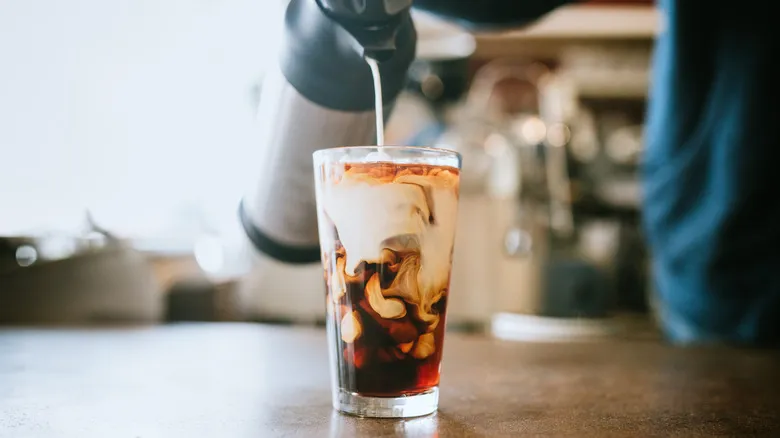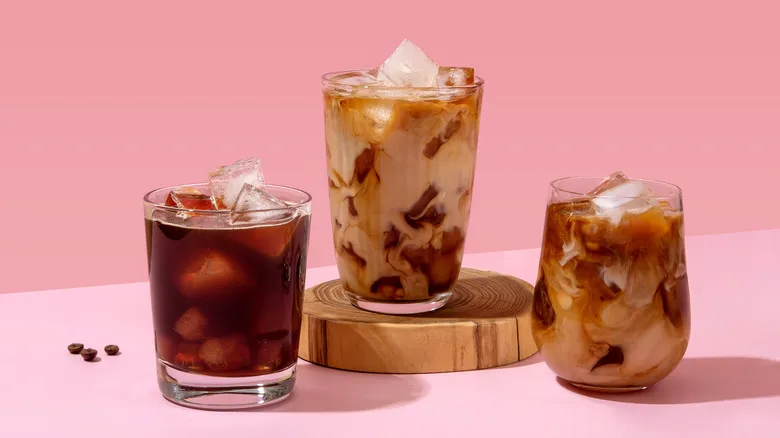Cold brew is actually steeped

Iced coffee is prepared just like a regular cup of coffee and can be brewed using various techniques such as pour-over, drip, or espresso. It can be made with any variety of coffee beans, making it as customizable as traditional hot coffee. Regardless of the method used, iced coffee begins with hot water extracting flavors from the coffee grounds. After this, it is either poured over ice immediately or chilled in the refrigerator. A delicious cup of iced coffee can be made in under 10 minutes. Since the water in iced coffee only interacts with the coffee grounds for a brief time, it doesn't absorb as much caffeine.
In contrast, cold brew takes over a day to prepare, which is why it ends up being significantly more caffeinated. Despite its name, cold brew is steeped rather than brewed, similar to tea. Instead of using hot water like iced coffee, cold brew involves soaking coarsely ground coffee beans in cold water for 12 to 24 hours. This extended extraction time allows for a greater amount of caffeine to be extracted from the coffee grounds into the cold brew.
Other differences between the drinks

The differing preparation methods of cold brew and iced coffee lead to distinct flavor profiles. Cold brew, with its extended steeping time, typically boasts a rich, full-bodied taste that iced coffee lacks. In contrast, adding ice to regular drip or pour-over coffee can quickly dilute the drink, resulting in a watery consistency that can mute flavors, enhance bitterness without reducing acidity, and alter the texture. On the other hand, cold brew is known for its smooth, sweet flavor, often enjoyed without cream or sugar, while iced coffee usually requires some modifications.
However, iced coffee has its own appeal—being simply cold coffee, it offers a bright, tangy flavor that many enjoy. If you prefer the lively notes of traditionally brewed coffee, iced coffee is a refreshing way to satisfy your caffeine cravings. While cold brew tends to be a crowd favorite due to its easygoing flavor, it’s important not to overlook its caffeine strength. If relaxation is your goal, iced coffee might be the better choice, as cold brew can leave some feeling overly energized.
Recommended

Coffee Milk Frothers Are Key To Top-Notch Scrambled Eggs

You Can't Have A Perfect Cup Of Decaf Tea Without Dumping It Out First

The Expert Guide To Coffee Bean Labels

Harvest Date Vs Roast Date: Which Matters Most For Buying Coffee?
Next up

